7/II 2024 [29-32]29)
Review: The Space Raceby Jeff Foust Monday, February 19, 2024
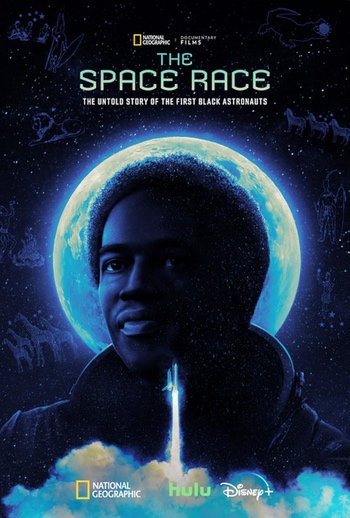 The Space Race: The Untold Story of the First Black Astronauts
The Space Race: The Untold Story of the First Black AstronautsDirected by Lisa Cortes and Diego Hurtado de Mendoza
91 minutes, not rated
Streaming on Disney+ and Hulu
https://www.imdb.com/title/tt27390817/Just after midnight Eastern time on March 1, a Crew Dragon spacecraft is set to launch to the International Space Station on the Crew-8 mission. Among the astronauts on board will be Jeanette Epps, a Black woman who was selected as a NASA astronaut in 2009 but is only now making her first flight.
https://www.thespacereview.com/article/4742/130)
The evolution of India’s weather satellite programsby Ajey Lele Monday, February 19, 2024
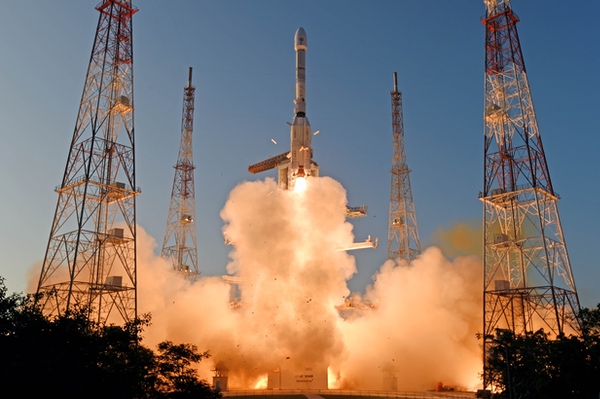 A GSLV Mark 2 rocket launched the INSAT-3DS weather satellite February 17. (credit: ISRO)
A GSLV Mark 2 rocket launched the INSAT-3DS weather satellite February 17. (credit: ISRO)On February 17, the Indian Space Research Organisation (ISRO) successfully launched the GSLV-F14 mission. It was the tenth flight of ISRO’s Geosynchronous Satellite Launch Vehicle (GSLV) with an indigenous cryogenic upper stage and the seventh operational flight of GSLV with such a stage. This launch placed India’s INSAT-3DS satellite into a geosynchronous transfer orbit.
https://www.thespacereview.com/article/4743/131)
From Southwest Regional Spaceport to Spaceport Americaby Thomas L. Matula Monday, February 19, 2024
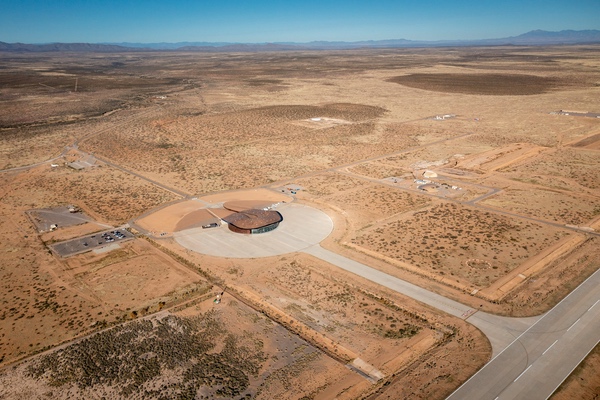 New Mexico’s Spaceport America, developed with Virgin Galactic as the anchor tenant, is far different than what was earlier proposed as the Southwest Regional Spaceport. (credit: Spaceport America)
New Mexico’s Spaceport America, developed with Virgin Galactic as the anchor tenant, is far different than what was earlier proposed as the Southwest Regional Spaceport. (credit: Spaceport America)As a space economist with a long interest in commercial spaceports, I was among hundreds of spectators parked along the tracks of the Burlington Northern Santa Fe Railroad in southern New Mexico on May 22, 2021. We came to witness the first crewed flight into suborbital space from Spaceport America.
https://www.thespacereview.com/article/4744/132)
Delivering a business case for rocket cargoby Jeff Foust Monday, February 19, 2024
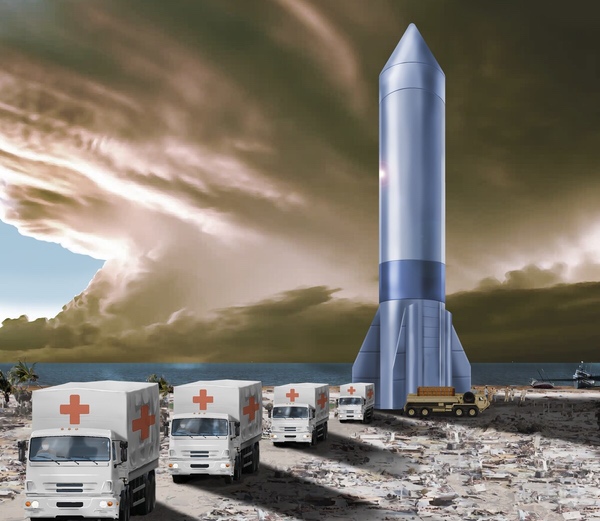 A notional illustration of the “Rocket Cargo” concept being studied by the US Air Force for the rapid delivery of cargo. SpaceX’s Starship is the most likely vehicle to be able to perform such services in the near term. (credit: USAF)
A notional illustration of the “Rocket Cargo” concept being studied by the US Air Force for the rapid delivery of cargo. SpaceX’s Starship is the most likely vehicle to be able to perform such services in the near term. (credit: USAF)Even in an era where the landing and reuse of rocket boosters has become commonplace (at least for one company), the idea seems a little, well, out there. Launch a rocket and have it land, 60 or 90 minutes later, halfway around the world, carrying tens of tons of cargo needed for military operations, humanitarian relief, or other purposes where time is of the utmost essence.
https://www.thespacereview.com/article/4745/18/II 2024 [33-36]33)
Review: The Battle Beyondby Jeff Foust Monday, February 26, 2024
 The Battle Beyond: Fighting and Winning the Coming War in Space
The Battle Beyond: Fighting and Winning the Coming War in Spaceby Paul Szymanski and Jerry Drew
Amplify Publishing, 2024
hardcover, 400 pp., illus.
ISBN 978-1-63755-071-7
US$35.00
https://www.amazon.com/exec/obidos/ASIN/1637550715/spaceviewsEarlier this month, Rep. Mike Turner (R-OH), chair of the House Intelligence Committee, warned fellow House members of a “serious national security threat” that he called on the White House to declassify. Within hours, various reports indicated that threat came from a Russian anti-satellite weapon of some kind, but details of which were unclear.
https://www.thespacereview.com/article/4746/134)
Cybersecurity for satellites is a growing challengeby Sylvester Kaczmarek Monday, February 26, 2024
 Protecting space assets from cyberattacks is becoming an urgent issue.
Protecting space assets from cyberattacks is becoming an urgent issue.In today’s interconnected world, space technology forms the backbone of our global communication, navigation, and security systems. Satellites orbiting Earth are pivotal for everything from GPS navigation to international banking transactions, making them indispensable assets in our daily lives and in global infrastructure.
https://www.thespacereview.com/article/4747/135)
The middle of No and Where: Johnston Island and the US Air Force’s nuclear anti-satellite weaponby Dwayne A. Day Monday, February 26, 2024
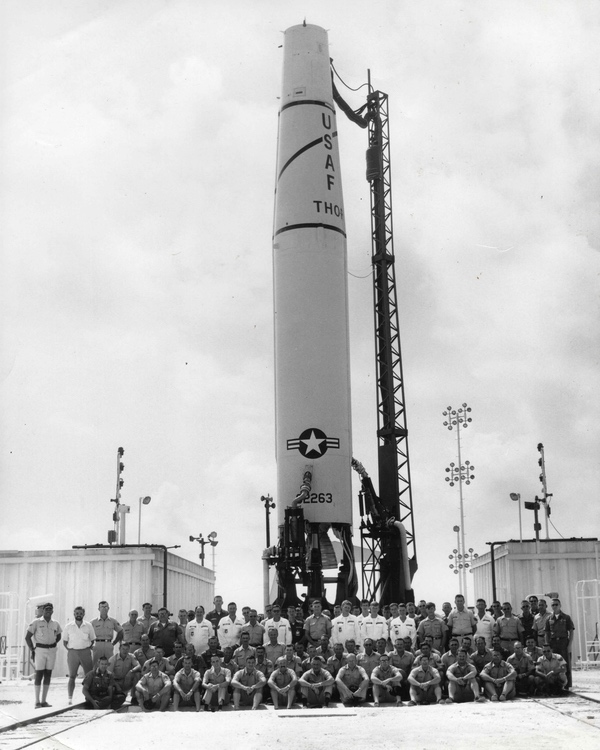 Johnston Island, located hundreds of kilometers from Hawaii, was the location of an American nuclear-armed anti-satellite program for approximately a decade. The island was small and offered no protection from weather or rocket launch accidents. The island is now abandoned. (credit: USAF)
Johnston Island, located hundreds of kilometers from Hawaii, was the location of an American nuclear-armed anti-satellite program for approximately a decade. The island was small and offered no protection from weather or rocket launch accidents. The island is now abandoned. (credit: USAF)Recently there was a flurry of media attention about Russia’s reported development of a nuclear-armed anti-satellite (ASAT) weapon. Soon after the space age began in the late 1950s, both the United States and Soviet Union began studying and then developing and deploying ASATs. From 1962 to 1975 the United States Air Force operated the nuclear-armed Program 437 ASAT from a remote location in the Pacific Ocean known as Johnston Island. Johnston was not only remote, it was small.
https://www.thespacereview.com/article/4748/136)
The phases of lunar lander success, revisitedby Jeff Foust Monday, February 26, 2024
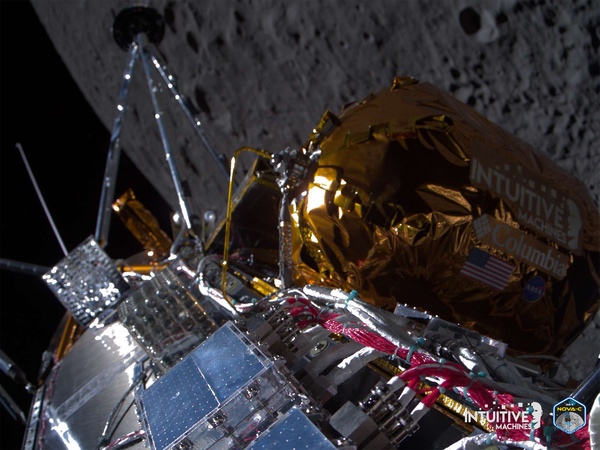 An image from the Intuitive Machines IM-1 lunar lander mission after the spacecraft entered orbit around the Moon. (credit: Intuitive Machines)
An image from the Intuitive Machines IM-1 lunar lander mission after the spacecraft entered orbit around the Moon. (credit: Intuitive Machines)Once again, the space community is grappling with how to characterize something less than undisputed, 100% perfection in a mission. That was the case last year when SpaceX launched its Starship vehicle on its first two test flights, both failing to complete their mission profiles but providing valuable experience for the company ahead of its next test flight, as soon as March (see “Grading on a suborbital curve”, The Space Review, April 24, 2023.)
https://www.thespacereview.com/article/4749/19/III 2024 [37-40]37)
Ode to Engle and Trulyby Emily Carney Monday, March 4, 2024
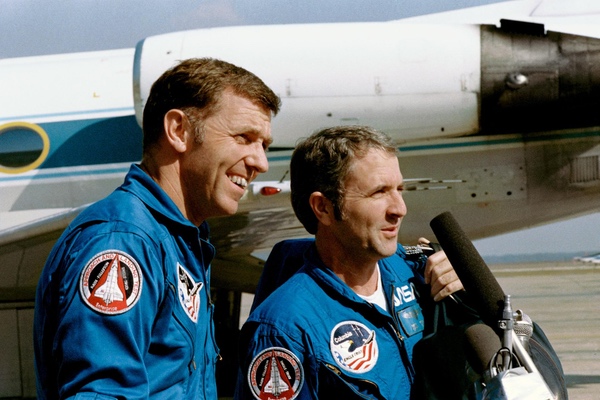 Astronauts Joe H. Engle, left, and Richard H. Truly greet reporters upon their return to Ellington Air Force Base near NASA’s Johnson Space Center (JSC), from Kennedy Space Center (KSC) after learning their flight (STS-2) has been postponed a week. (credit: NASA)
Astronauts Joe H. Engle, left, and Richard H. Truly greet reporters upon their return to Ellington Air Force Base near NASA’s Johnson Space Center (JSC), from Kennedy Space Center (KSC) after learning their flight (STS-2) has been postponed a week. (credit: NASA)“Nostalgia—it’s delicate, but potent… It’s a twinge in your heart far more powerful than memory alone. This device isn’t a spaceship; it’s a time machine. It goes backwards and forwards… it takes us to a place where we ache to go again.” – Don Draper, Mad Men.
https://www.thespacereview.com/article/4750/138)
Taking stock of the US space programby Namrata Goswami Monday, March 4, 2024
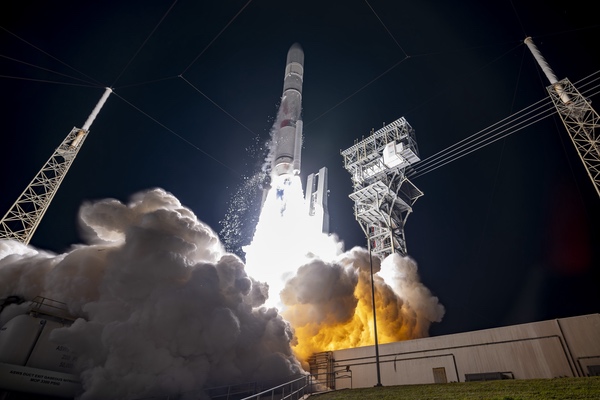 The first Vulcan Centaur launched in January, one sign of the strength of the US space program even as it has weaknesses elsewhere. (credit: ULA)
The first Vulcan Centaur launched in January, one sign of the strength of the US space program even as it has weaknesses elsewhere. (credit: ULA)In 2023, a paradigmatic shift occurred regarding government space programs that was perhaps missed by the global space community. Euroconsult’s 2023 Government Space Program report highlighted that shift: defense-related space expenditures ($59 billion) exceeded civil space budgets ($58 billion) in 2023 for the first time.
https://www.thespacereview.com/article/4751/139)
Squinting at the universeby Jeff Foust Monday, March 4, 2024
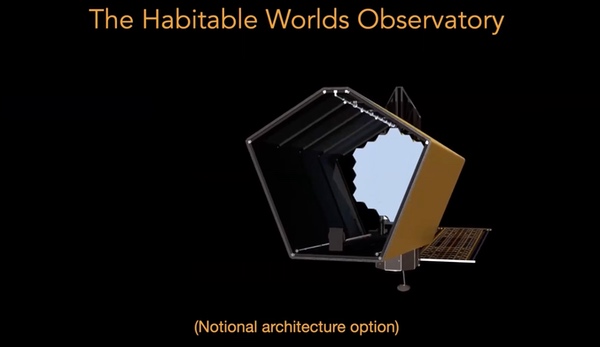 A notional design for the Habitable Worlds Observatory space telescope presented at a recent meeting. NASA and the science community is only beginning the work to determine the real design of the spacecraft, expected to launch in the 2040s. (credit: NASA)
A notional design for the Habitable Worlds Observatory space telescope presented at a recent meeting. NASA and the science community is only beginning the work to determine the real design of the spacecraft, expected to launch in the 2040s. (credit: NASA)Last week, many astronomers got bad news about a good thing. The Space Telescope Science Institute, which operates the James Webb Space Telescope, announced the selections for the next round of JWST observations, called Cycle 3 and set to begin this summer. The institute said it selected 253 proposals for 5,500 hours of “prime time” observations from solar system objects to the distant universe.
https://www.thespacereview.com/article/4752/140)
A North Korean satellite starts showing signs of lifeby Marco Langbroek Monday, March 4, 2024
 Kim Jong Un and his daughter visiting a Malligyong assemblage facility in May 2023. A Malligyong satellite (or mock-up thereof) can be seen in the background (credit: KCNA)
Kim Jong Un and his daughter visiting a Malligyong assemblage facility in May 2023. A Malligyong satellite (or mock-up thereof) can be seen in the background (credit: KCNA)Three and a half months ago, on November 21, 2023, North Korea launched its first military reconnaissance satellite, Malligyong 1. A Chollima-1 rocket launched from Sohae inserted Malligyong-1 (international designator: 2023-179A) into a Sun-synchronous orbit of 512 by 493 kilometers and an inclination of 97.4 degrees. Within days of the launch, North Korea claimed that the satellite is taking imagery of targets of interest.
https://www.thespacereview.com/article/4753/110/III 2024 [41-44]41)
Review: The New World on Marsby Jeff Foust Monday, March 11, 2024
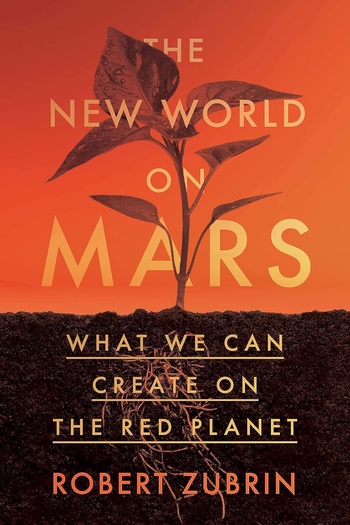 The New World on Mars: What We Can Create on the Red Planet
The New World on Mars: What We Can Create on the Red Planetby Robert Zubrin
Diversion Books, 2024
hardcover, 320 pp., illus.
ISBN 978-1-63576-880-0
US$28.99
https://www.amazon.com/exec/obidos/ASIN/1635768802/spaceviewsAs soon as this Thursday, SpaceX will launch its Starship/Super Heavy vehicle on its third integrated test flight, after launches last April and November. On this flight SpaceX hopes, beyond avoiding the explosive ends of those earlier flights, to test a payload bay door and transfer propellant within Starship, key capabilities needed for that vehicle’s early missions to launch Starlink satellites and land humans on the Moon for NASA.
https://www.thespacereview.com/article/4754/142)
The psychological challenges of a long voyage to Marsby Nick Kanas Monday, March 11, 2024
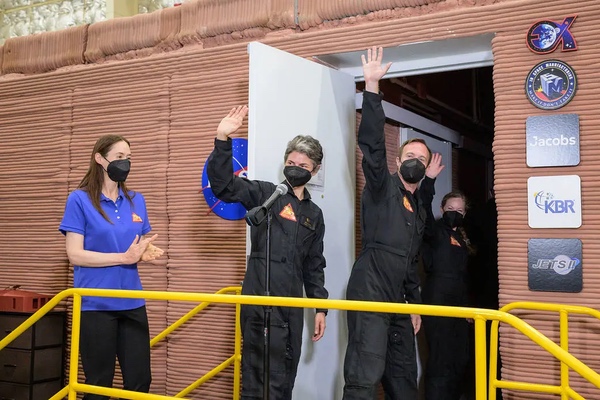 The four-person crew of NASA’s CHAPEA experiment enter their simulated Mars habitat last summer for a year-long Mars analog mission. (credit: NASA/Josh Valcarcel)
The four-person crew of NASA’s CHAPEA experiment enter their simulated Mars habitat last summer for a year-long Mars analog mission. (credit: NASA/Josh Valcarcel)Within the next few decades, NASA aims to land humans on the Moon, set up a lunar base, and use the lessons learned to send people to Mars as part of its Artemis program.
https://www.thespacereview.com/article/4755/143)
India unveils its first set of Gaganyaan astronautsby Jatan Mehta Monday, March 11, 2024
 Indian Prime Minister Narendra Modi greets the four Gaganyaan astronauts at a February 27 event. (credit: Press Information Bureau)
Indian Prime Minister Narendra Modi greets the four Gaganyaan astronauts at a February 27 event. (credit: Press Information Bureau)After four years of secrecy, the Indian Prime Minister Narendra Modi announced on February 27 the first four astronauts selected to fly on the country’s initial set of human spaceflight missions mid-decade via ISRO’s ambitious Gaganyaan program. The selectees are all test pilots and Group Captains: Prashanth Nair, Angad Prathap, Ajit Krishnan, and Shubhanshu Shukla. They have received extensive training in India and Russia, and at least one of them will receive advanced training in the US at NASA facilities sometime this year. The announcement of Gaganyaan astronauts is a great time to review India’s progress in putting people in space.
https://www.thespacereview.com/article/4756/144)
The difficult early life of the Centaur upper stageby Trevor Williams Monday, March 11, 2024
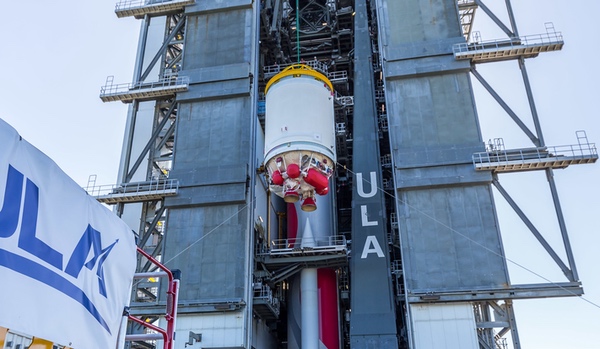 A Centaur V upper stage being hoisted into position to be integrated with a Vulcan rocket ahead of the Vulcan’s first launch. (credit: ULA)
A Centaur V upper stage being hoisted into position to be integrated with a Vulcan rocket ahead of the Vulcan’s first launch. (credit: ULA)On January 8, the first Vulcan rocket by United Launch Alliance successfully placed the Peregrine lander on a trajectory bound for the Moon. This lander then experienced propulsion problems that prevented a lunar landing attempt, but the Vulcan had performed its task perfectly. The upper stage of the Vulcan, the Centaur V (V signifying 5, not Vulcan), is a high-energy upper stage that contributes to the Vulcan’s impressive performance for planetary missions and others.
https://www.thespacereview.com/article/4757/111/III 2024 [45-48]45)
Review: Space: The Longest Goodbyeby Jeff Foust Monday, March 18, 2024
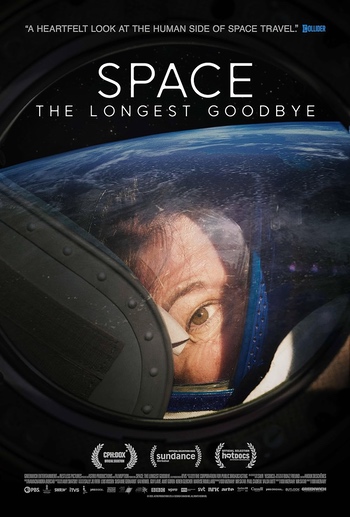 Space: The Longest Goodbye
Space: The Longest Goodbyedirected by Ido Mizrahy
87 minutes, not rated
https://www.imdb.com/title/tt24082558/NASA is offering people a chance to go to Mars—or, rather, “Mars.” The agency announced last month they were accepting applications for its second year-long mission in its Crew Health and Performance Exploration Analog (CHAPEA) project.
https://www.thespacereview.com/article/4758/146)
“A rose, by any other name”: Proposing a national naming competition for our lunar exploration program (part 1)by Cody Knipfer Monday, March 18, 2024
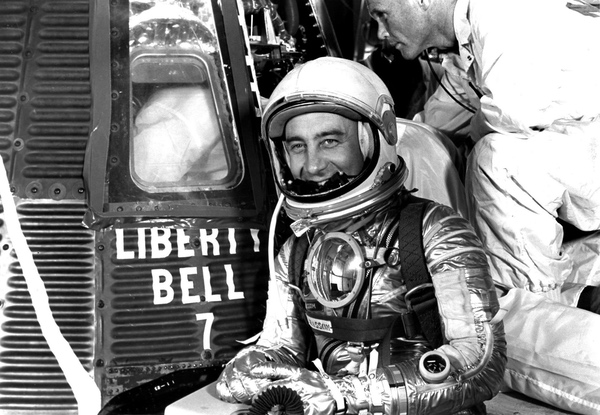 NASA has used a variety of naming conventions for both crewed and robotic spacecraft throughout its history. (credit: NASA)
NASA has used a variety of naming conventions for both crewed and robotic spacecraft throughout its history. (credit: NASA)What’s in a name?
For Shakespeare’s Juliet Capulet, it is the embodiment of forbidden love. The last name of her amour, “Montague,” bears significance—in her and Romeo’s case, the tragic implications of a familial rivalry. Much the same, names have weight in the real world, especially so for the real-world explorers of yesteryear and today.
https://www.thespacereview.com/article/4759/147)
Texas Space Commissions, from Conestoga to Starshipby Thomas L. Matula Monday, March 18, 2024
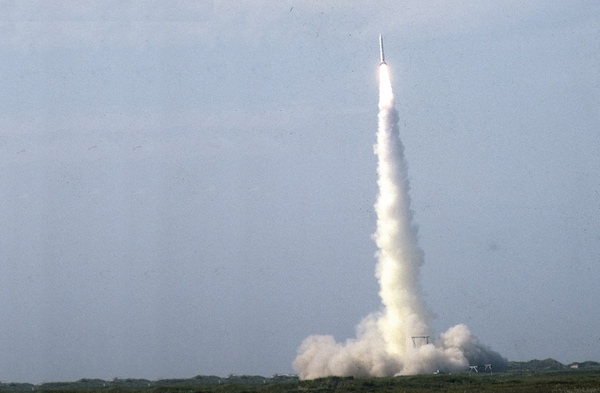 Texas hosted the first launch of a privately developed rocket more than 40 years ago but soon lost any first-mover advantage. (credit: Celestis)
Texas hosted the first launch of a privately developed rocket more than 40 years ago but soon lost any first-mover advantage. (credit: Celestis)The Lone Star State once again has a Texas Space Commission thanks to a bill signed into law on June 14, 2023, by Governor Greg Abbott.[1] The former Texas Aerospace Commission, which ceased operations in 2003, started out as the Texas Space Commission in 1987, spurred on by the launch of the first commercial rocket into space five years before.[2]
https://www.thespacereview.com/article/4760/1Trzeci test odbył się po trajektorii suborbitalnej przy uzyskaniu prędkości orbitalnej.http://lk.astronautilus.pl/n240301.htm#10https://www.forum.kosmonauta.net/index.php?topic=5664.msg190176#msg19017648)
Accelerating Starshipby Jeff Foust Monday, March 18, 2024
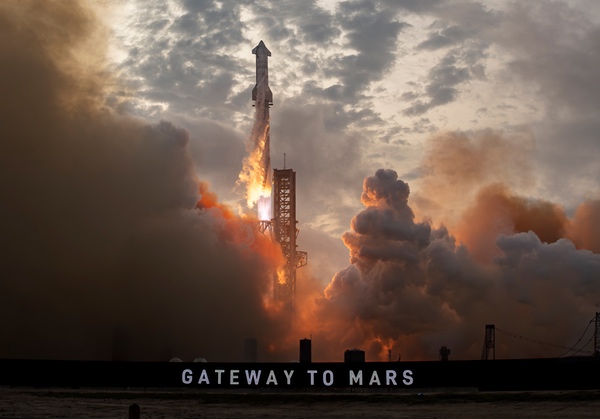 Starship/Super Heavy lifts off March 14 from SpaceX’s Starship site in South Texas. (credit: SpaceX)
Starship/Super Heavy lifts off March 14 from SpaceX’s Starship site in South Texas. (credit: SpaceX)When Starship lifted off Thursday morning from SpaceX’s launch site at Boca Chica, Texas, the one question on most people’s minds was this: how far would it get this time? Its first flight, nearly 11 months earlier, ended four minutes after liftoff when the tumbling Starship/Super Heavy stack was detonated by a flight termination system; the liftoff had, in the process, made a mess of the pad because of the lack of a water deluge system (see “Grading on a suborbital curve”, The Space Review, April 24, 2023).
https://www.thespacereview.com/article/4761/112/III 2024 [49-52]49)
“For All Mankind”: space drama’s alternate history constructs a better vision of NASAby Val Nolan Monday, March 25, 2024
 Masha Mashkova and Joel Kinnaman in the fourth season of “For All Mankind”. (credit: Apple TV+)
Masha Mashkova and Joel Kinnaman in the fourth season of “For All Mankind”. (credit: Apple TV+)Great art is often difficult to quantify. The Apple TV+ series “For All Mankind” is a case in point, running the risk of being too sci-fi for drama fans (rockets, moon bases, Mars) and having too much naturalistic drama for sci-fi aficionados (jealousy, divorce, institutional politics).
https://www.thespacereview.com/article/4762/150)
Preventing a “Space Pearl Harbor”: Rep. Turner leads the chargeby Brian G. Chow Monday, March 25, 2024
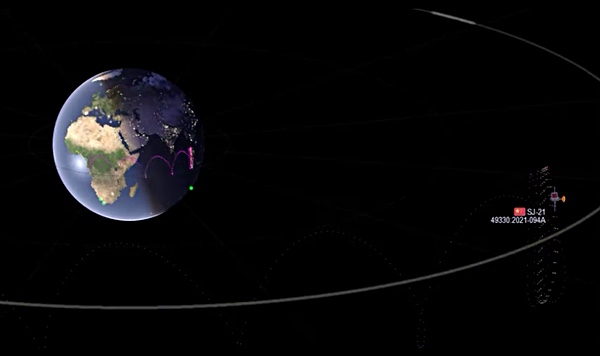 Maneuvers by China’s SJ-21 in GEO, including moving a Beidou satellite out of the belt, is just one of the many Chinese space activities with counterspace implications. (credit: ExoAnalytic Solutions)
Maneuvers by China’s SJ-21 in GEO, including moving a Beidou satellite out of the belt, is just one of the many Chinese space activities with counterspace implications. (credit: ExoAnalytic Solutions)Accolades are due to House Intelligence Committee Chairman Mike Turner and the White House for a quick and amicable settlement of Russia’s developing space threat. It involved a balancing act between the American public’s need to know and the Biden Administration’s need for secrecy.
https://www.thespacereview.com/article/4763/151)
“A rose, by any other name”: Proposing a national naming competition for our lunar exploration program (part 2)by Cody Knipfer Monday, March 25, 2024
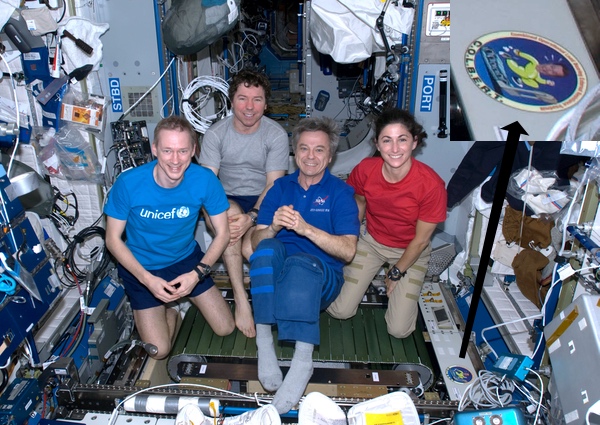 A naming contest that went a bit awry led to a treadmill on the International Space Station being named for Stephen Colbert, complete with a custom patch. (credit: NASA)
A naming contest that went a bit awry led to a treadmill on the International Space Station being named for Stephen Colbert, complete with a custom patch. (credit: NASA)[Part 1 was published last week.]
“By any other name…”: On naming competitions and outreachPublic consultation can take many forms: invited expert input, advisory committees, informal and formal “requests for information”—and write-in competitions.
https://www.thespacereview.com/article/4764/152)
Lessons from the first CLPS lunar landing missionsby Jeff Foust Monday, March 25, 2024
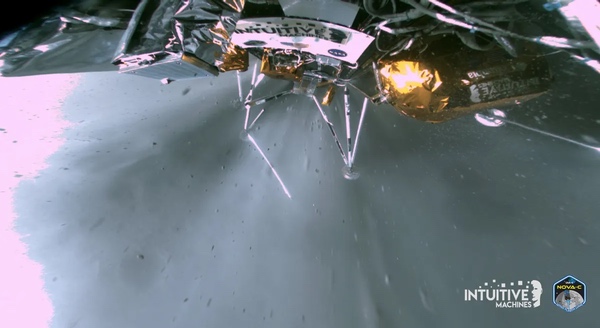 An image of the IM-1 landing, showing one of the lunar lander legs breaking as the spacecraft hit the surface faster than it was designed to. (credit: Intuitive Machines)
An image of the IM-1 landing, showing one of the lunar lander legs breaking as the spacecraft hit the surface faster than it was designed to. (credit: Intuitive Machines)The IM-1 lunar lander mission officially came to an end Saturday. As the Sun dipped below the horizon on February 29, nearly a week after landing, flight controllers at Intuitive Machines put the lander, known as Odysseus or “Odie,” into a mode so that, when sunlight returned to the lander in a few weeks, it could wake up and start transmitting—if it managed to survive bitterly cold conditions.
https://www.thespacereview.com/article/4765/1